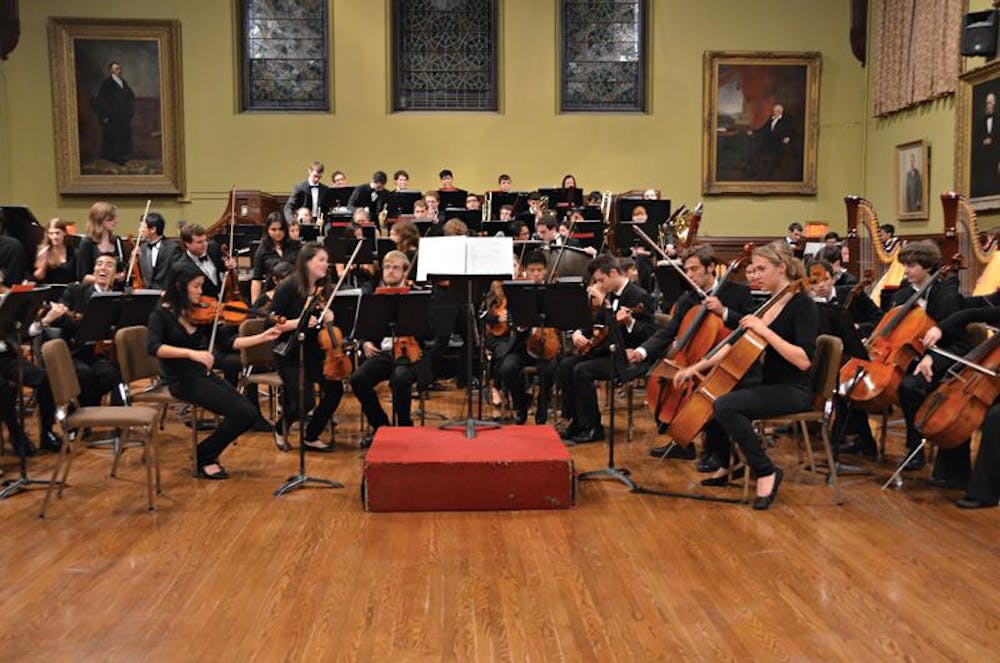An international conference entitled "Music Between Nation and Form: Mario Castelnuovo-Tedesco and the Boundaries of Italianita" combined modernist musical performances with the historical context of Italian-Jewish composer Mario Castelnuovo-Tedesco this weekend. The Italian studies department organized the symposium to showcase the department and to inaugurate a recent donation by the Tabak Fund, which sponsored the three-day event. The conference included two concerts and a series of panels on the life, musical identity and influence of Castelnuovo-Tedesco.
Inspiration for the event's topic came in spring 2011, when its organizer, Professor of Comparative Literature and Italian Studies Suzanne Stewart-Steinberg, attended a concert at Brown featuring a guitarist who performed several of Castelnuovo-Tedesco's pieces. After researching the composer further, Stewart-Steinberg, proposed his music to the department, which was "thrilled" at the idea of an interdisciplinary multimedia event, she said.
Born in Florence in 1895, Castelnuovo-Tedesco is best known today for his guitar compositions, though he gained recognition early on in his career for his interest in neoclassicism, which distinguished him from other musicians of the Italian modernist movement. After the persecution of Jews arose from racial laws in Italy, Castelnuovo-Tedesco fled Italy for the United States, where he later became a citizen. He embodies "all kinds of national identities and cultural identities," Stewart-Steinberg said.
"We are absolutely thrilled that we have been able to organize (the conference)," said Massimo Riva, professor of Italian Studies and chair of the department.
Despite the composer's repertoire of over 200 compositions, not many people are familiar with Castelnuovo-Tedesco, Stewart-Steinberg said, which was another reason to exhibit his work in the conference. Each panel explored a different aspect of Castelnuovo-Tedesco's musical journey, including his Florentine identity, his exile from Italy, the relationship between his music and poetry and the Jewish-Italian interculturalism that defined his music. One panel included a film entitled "Letters from Babylon" that was created for the event.
Castelnuovo-Tedesco's numerous and varied compositions are in some ways compilations of the different identities that composed his life. The first of two concerts performed during the conference evoked the composer's love for poetry in music. Entitled "Sounds of Sonnets, Strings, and Winds: Mario Castelnuovo-Tedesco's Chamber Music Between Two Worlds," the concert featured sonnets, ballads and several pieces from Shakespeare Songs. In an essay called "Music and Poetry: Problems of a Song-Writer," Castelnuovo-Tedesco wrote of his inspiration to "unite my music to poetic texts that arouse my interest and emotion" and to "set them forth in lyric expression."
At Friday's concert, the audience heard the music before they could see it. Director of Choral Studies and organist Fred Jodry opened the program from the organ, accompanying the voices of a small singing group Schola Cantorum. The first piece, entitled "Lecha Dodi," involved several call-and-response interactions between the singers and the organist, with the singers' voices floating throughout the concert hall from the balcony above the audience. Castelnuovo-Tedesco composed this piece as an acrostic poem for the Synagogue of Amsterdam after his mother transcribed the words to Hebrew so he could set them to music. The program continued with a sequence of poems sung to the accompaniment of the guitarist, who sat center stage and impressed the audience with his rapidly changing chords and trill movements.
For the orchestra portion of the concert, Director of Orchestras and Chamber Music Paul Phillips had to select the program's pieces by ear because very few have been recorded. He settled on the "Overture to the Tragedy of Coriolanus," based on a Shakespeare play. Composed in 1947, the piece premiered in Italy and was recorded once in Australia. Brown's performance on Friday was the first time it had ever been played in America.
"Sixty-five years after it's written, we'll give the first performance," Phillips said. "It's a very unusual situation. We feel like we're doing something groundbreaking."
With rising and falling tension, multiple fast-paced trills in the string section and melodic oboe solos, the piece unfolded much like an adventure story, recalling Castelnuovo-Tedesco's work on film scores. "It's very romantic music, not at all modern-sounding," Phillips said.
The other main orchestral piece was a cello concerto. Typically, pieces include one cadenza - the virtuosic moment in a concerto when the soloist plays by himself - but in this concerto, there were three. The "first hurdle was to imagine how this could work," he said, since the orchestra only had a total of six rehearsals before coming together for the concert Friday night.
The concert drew a large crowd of students and international guests, with all the seats filled and people standing in the aisles. In attendance were three of Castelnuovo-Tedesco's grandchildren.
"Of course, it's very exciting for us to be here," said Diana Castelnuovo-Tedesco, the composer's granddaughter, adding that she commends the conference for facilitating the "rediscovering (of) Mario's work, and especially his songs."

ADVERTISEMENT




